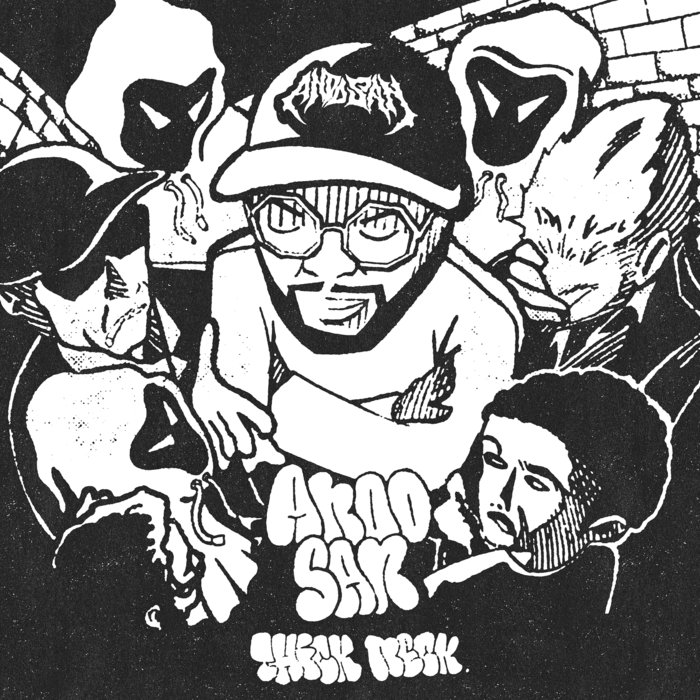
Thick Neck – Ando San
this blog is GROOVY – check out great Soul, Funk, Jazz, Hip Hop, Bass, Breaks , Reggae, House n many more TUNES
Hey there, fellow music explorer! 🌟 Today, we’re diving into the quirky and complex world of math rock. If you love your beats unconventional and your time signatures a little mind-bending, then grab your headphones as we groove through the history of this fascinating genre!
Math rock is like that cool cousin at family gatherings—always a bit different but undeniably awesome. Originating in the late 1980s and gaining traction in the ’90s, this genre is all about intricate rhythms, odd time signatures, and catchy melodies. It’s a mash-up of progressive rock, post-rock, punk, and jazz influences.
Unlike traditional rock which often sticks to straightforward 4/4 time (think classic pop anthems), math rock revels in polyrhythms and complex riffs. The result? A sound that’s both cerebral AND danceable—if you can figure out how to move to it! 🕺💃
Math rock didn’t just appear outta nowhere—it had its roots planted firmly in some innovative musical soil! Bands like Rush and King Crimson paved the way with their adventurous song structures back in the ’70s. Fast forward to the ’80s when bands like Hüsker Dü started infusing punk energy with more intricate musical ideas.
But it was really during the ‘90s that math rock began to bloom into its own funky flower! Acts such as Don Caballero, known for their jaw-dropping musicianship (seriously—their drummer was basically part octopus), emerged on the scene alongside others like Battles and Shellac.
So what makes math rock… well… “math”? Here are some attributes that define this unique sound:
These elements come together for an experience that’s complex yet approachable—like trying to solve a puzzle while doing yoga.
Their album American Don released in 2000 is practically considered sacred by math rock aficionados. With dizzying tempos that would make even seasoned drummers break a sweat!
Mirrored, released in 2007 features “Atlas,” which has one of those infectious grooves that’ll have you humming while calculating your next dance move—a true test of multitasking skills!
Blending genres seamlessly; if you’re not careful listening to them might inspire sudden urges for spontaneous invention—you’ll feel smarter merely by association!
The guitarist from Tera Melos once said they use so many notes because they’re terrified people will get bored listening if they don’t keep changing things up every few seconds! Talk about performance anxiety!
As we cruised into the gooey heartland of modern music—a.k.a., early 2000s onward—newer bands took cues from these pioneers. Groups like Chon, known for their upbeat vibe combined with sophisticated playing styles popped onto playlists everywhere.
Molasses-like progressiveness aside: Chon’s band members were voted “Best Hair” amongst local competitions during high school days! Who says hard work doesn’t pay off?
And let’s not forget about acts such as UK-based band Toe. They serve up delicious instrumental fare garnished with hints from shoegaze scenes served on sonic plates made entirely without lyrics—but plenty emotional nonetheless!
Today? Math rock’s still going strong amid various subgenres sprouting everywhere—from emo revivals marrying catchiness with technicality (“emo math,” perhaps?) down south right through hipster corners inhabited mostly by cats judging human creativity levels.
It’s also found inspiration across genres where artists experiment outside typical boundaries—and let me tell ya: artists are finally getting brave enough not only break rules but embrace unconventionality fully without fear audiences leaving midway through shows crying tears motive towards mainstream conformity instead 💔🎸✌️ .
One famous musician admitted he joined several jam sessions hoping people wouldn’t notice his terrible counting abilities—not exactly stellar confidence booster but hey… sometimes wingin’ it wins hearts too!
In conclusion folks—we’ve traversed quite a journey exploring these wildly multifaceted compositions steeped within mathematics while feeling free enough expressing ourselves artistically along every winding road imaginable! 🎶✨ So next time someone asks why on Earth you’d listen to “complicated” music? Just shrug confidently nodding saying: “It makes me feel alive!” Because ultimately—that’s what it’s all about—the joy of discovering soundscapes shaped by genius minds who refuse limits imposed upon creativity…and maybe scoring killer concert tickets before anyone else does too 😉🎉 . Keep groovin’!

Thick Neck – Ando San

Dash Out feat. Spiro – Ando San